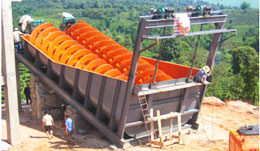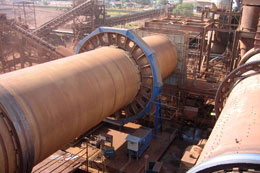-
Sand Making Crusher
- PCL-Vertical Shaft Impact Crusher
- SBM Hydraulic VSI Crusher
- VSI5X Series Impact Crusher
Gypsum mineral quarry
Quarrying Gypsum in Line with Nature
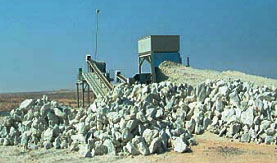
The mineral Gypsum precipitated some 10-400 million years ago when sea water evaporated. From a chemical point of view, it is Calcium Sulphate Dihydrate (CaSO4.2H2O) deposited in sedimentary layers on the sea bed. Under high pressure and temperature or under high salinity Gypsum turns into Anhydrite (CaSO4).
We provide stone crusher,Grinding mill for gypsum quarry. If you need any gypsum machines,please contact us.
In nature, Gypsum and Anhydrite occur as beds or nodular masses up to a few metres thick. Gypsum is mostly formed by the hydration of Anhydrite. The depth of hydration can range from the surface of the deposit down to three hundred metres, depending on temperature and pressure, topography and the structure of the deposit. Anhydrite is often mined in conjunction with Gypsum, but is comparatively limited in its technical applications. The content of calcium sulphate in a sedimentary rock varies from 70% to 100%, the rest being clay and limestone.
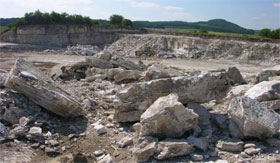
Gypsum is extracted from open-cast mines or underground mines using room and pillars mining methods. Gypsum is normally only screened to remove “fine particles” (mainly mudstones), then crushed and finely ground. The extraction process implies an unavoidable impact on the landscape and the natural environment. However, human activity does not necessarily mean loss of biodiversity and danger for eco-systems.
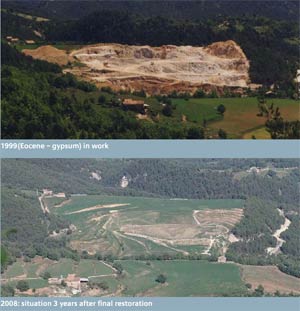
Indeed, without human economic activity, Central Europe would nowadays almost be exclusively covered with forests. This type of habitat is not particularly favouring the uptake of many species as many herbaceous plants cannot live under the leafy canopy of the trees due to the lack of light. Those conditions would also have prevailed at gypsum locations with relatively shallow soils. But as small-scale farming emerged, numerous plant species were able to migrate to the open habitats and the number of species steadily increased. Human activity resulted in a richer biodiversity. No mineral fertilizers and agrochemicals such as pesticides were available at that time. With the uptake of large scale farming and the intensive use of those chemical products, we observed a dramatic decrease in species and biodiversity. As a result of the large supply of nutrients, tall-growing species displaced low growing plants, and common species, also known as ubiquists, displaced rare plants. Human activity in that case meant a loss of biodiversity.
The development of a gypsum quarry creates the favorable conditions that provide habitats for photophilic and thermophilic (light and heat demanding) species, orchids, gentians and carnation because “disturbance ecology” can take place in and under: 1. Areas which are exposed to light thanks to the removal of tall-growing vegetation; 2. Oligotrophic soil conditions which are created thanks to the removal of the eutrophicated topsoil; 3. A wide variety of habitats which is obtained as a result of the different shapes of quarries.
- Limestone Crusher
- Barite Crusher
- Granite Crusher
- Kaolinite Crusher
- Calcite Crushing
- Tombarthite Crusher Mill
- Bentonite Grinding Plant
- Basalt Ore Crusher
- Lignite Crusher Mill
- Silica Ore Crusher
- Tin Ore Mine
- Lead and Zinc Ore Crusher
- Ochre Crusher Mill
- Garnet Crusher
- Mica Crusher
- Asbestos Crusher
- Manganese Ore Crusher
- Talc Crusher Mill
- Feldspar Crusher
- Iron Ores Crusher
- Dolomite Crusher
- Quartz Crusher
- Gypsum Crusher
- Calcium Carbonate Grinding
- Gypsum mineral processing
- Gypsum powder production
- Gypsum mineral beneficiation
- Gypsum mineral quarry
- Recycle gypsum processing
- Gypsum mining machine
- About Us
- |
- Service
- |
- News & Events
- |
- Contact Us
- |
- Resources
- |
- Showroom
Aggregate Crusher
Artificial Sand Making
Ballast Crushing Machine
Basalt Stone Crusher
Barite Mine Process
Beneficiation Plant
Bentonite Crusher
Bentonite Milling
Calcium Carbonate Crusher
Calcium Carbonate Grinding
Cement Grinding
Concrete Crusher
Coal Crusher
Copper Crusher
Cement Mill
Chrome Mining Process
Copper ore Beneficiation
Coal Processing
Coal Pulvarizer
Feldspar Crushing
Feldspar Grinding
Flotation Machine
Gold Crusher
Gold Mine Equipment
Gold Processing Machinery
Granite Crusher
Granite Crushing Machine
Granite Quarry Equipment
Gypsum Crusher
Gypsum Mining
Gypsum Powder Production
Iron Ore Beneficiation
Iron Ore Crusher
Kaolin Processing Plant
Limestone Crusher
Silica Sand Crusher
Iron Ore Mining Equipment
Cement Production Line
Talc Production Line
Quartz Crushing Machine
Limestone Mining Process
Manganese Benificietion


